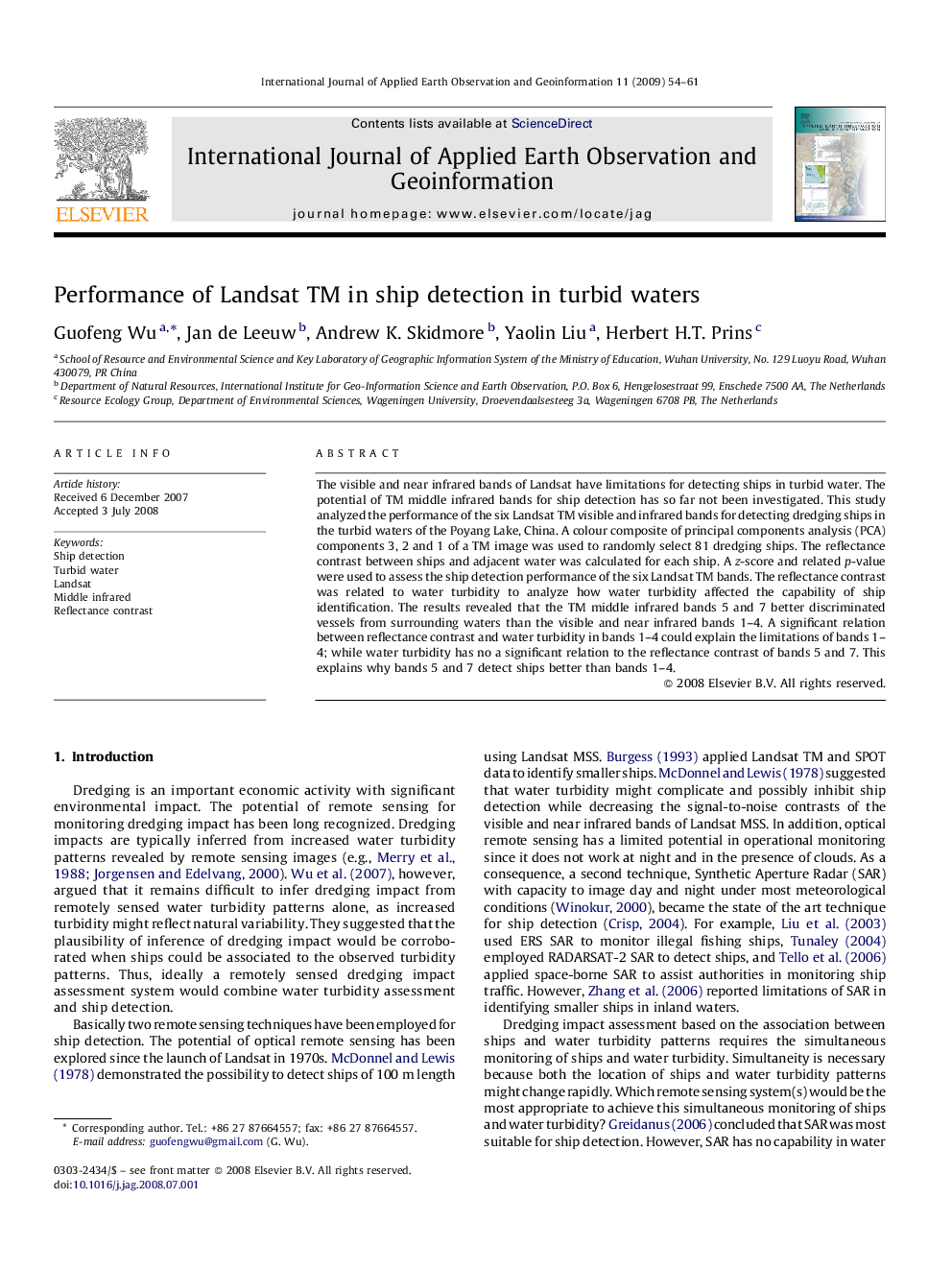| Article ID | Journal | Published Year | Pages | File Type |
|---|---|---|---|---|
| 4465160 | International Journal of Applied Earth Observation and Geoinformation | 2009 | 8 Pages |
The visible and near infrared bands of Landsat have limitations for detecting ships in turbid water. The potential of TM middle infrared bands for ship detection has so far not been investigated. This study analyzed the performance of the six Landsat TM visible and infrared bands for detecting dredging ships in the turbid waters of the Poyang Lake, China. A colour composite of principal components analysis (PCA) components 3, 2 and 1 of a TM image was used to randomly select 81 dredging ships. The reflectance contrast between ships and adjacent water was calculated for each ship. A z-score and related p-value were used to assess the ship detection performance of the six Landsat TM bands. The reflectance contrast was related to water turbidity to analyze how water turbidity affected the capability of ship identification. The results revealed that the TM middle infrared bands 5 and 7 better discriminated vessels from surrounding waters than the visible and near infrared bands 1–4. A significant relation between reflectance contrast and water turbidity in bands 1–4 could explain the limitations of bands 1–4; while water turbidity has no a significant relation to the reflectance contrast of bands 5 and 7. This explains why bands 5 and 7 detect ships better than bands 1–4.
